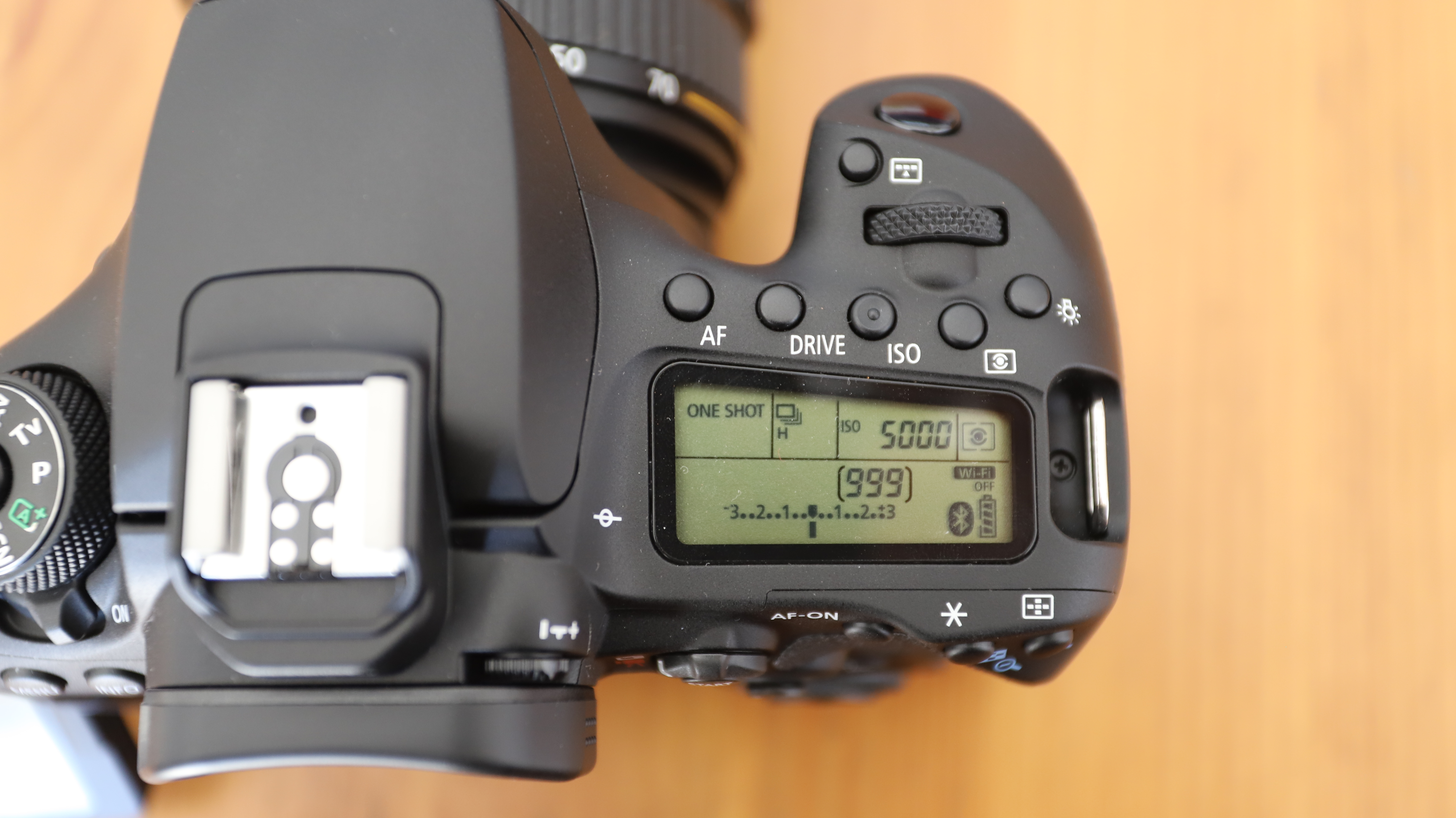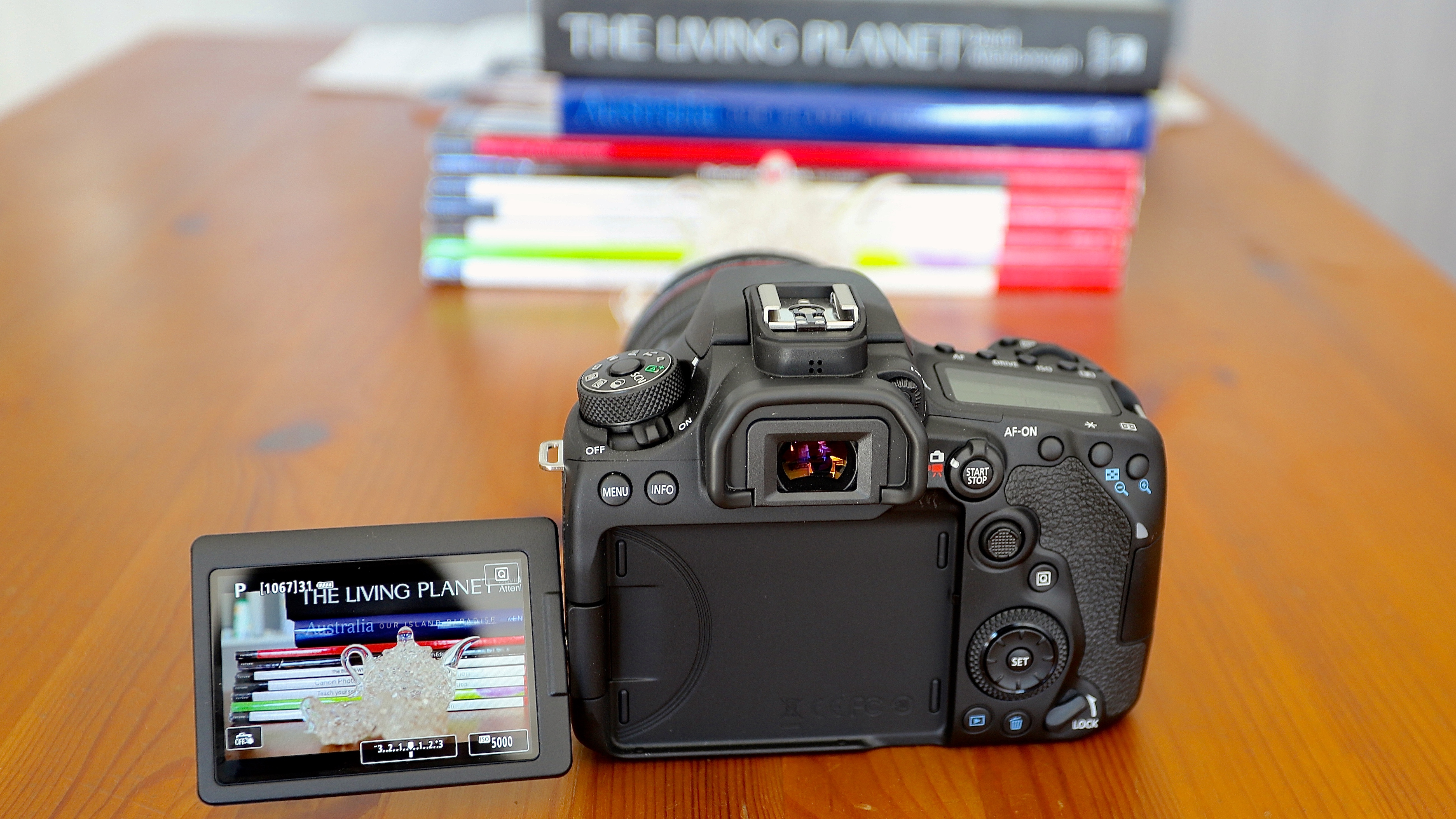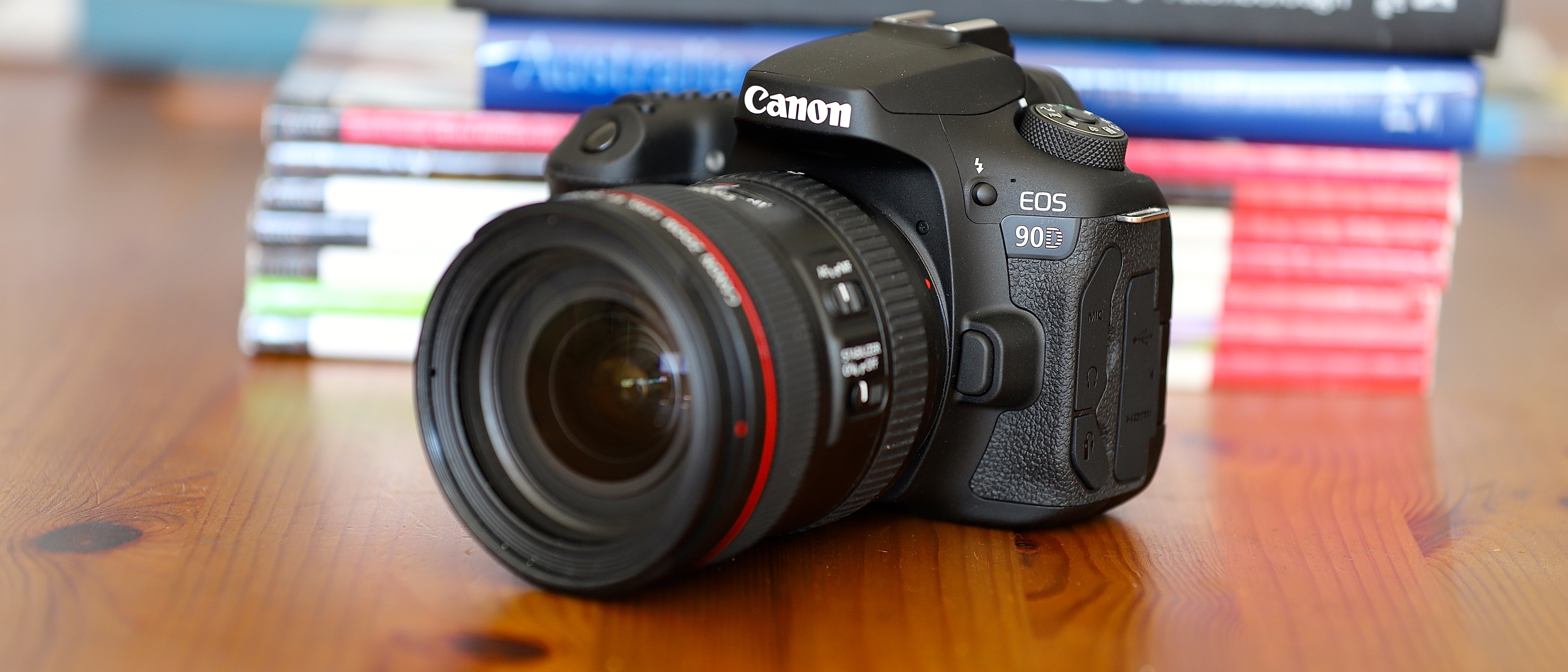Why you can trust TechRadar
Build and handling
- Aluminum alloy and polycarbonate resin body
- 8-way AF joystick
- Ergonomic grip
Measuring just 140.7(W) x 104.8(H) x 76.8(D) mm, the EOS 90D is a fraction wider than the 80D (coming in at 139 x 105.2 x 78.5mm), but is shorter and thinner. The new camera is also a tad lighter than its predecessor, weighing in at 701g (with battery and SD card) compared to the 80D at 730g. It's unlikely you'll feel much of a difference.
While the camera isn’t entirely weatherproof (it is water- and dust-resistant, though), its aluminum alloy, polycarbonate resin and glass fibre body feels sturdily built and is extremely comfortable to use, even over long durations. This is thanks to a redesigned grip that is deeper and slightly thinner than the one on Canon’s older DSLRs.
Even if you’ve got small mitts, the 90D is easy to handle. We shot using the EF 24-70mm f/4L IS USM, the 17-40mm f/4L USM and the EF 70-200mm f/2.8L IS III USM – even with that last monster of a lens, the camera felt well balanced and comfortable.

If you’ve ever used a Canon DSLR before, be it the 80D, the 7D Mark II or even the EOS 6D Mark II, you'll feel a sense of comfortable familiarity with this new model. A new 8-way joystick on the rear of the camera is a welcome addition, allowing you to choose AF points easily. The default option on the camera to activate AF point selection is by pressing the dedicated button on the shoulder of the 90D. However, an option in the customization menu will move this function to the joystick.
The addition of the joystick means some of the buttons have been moved around a little. It takes the spot the Q button occupied on the 80D (used to quickly access important camera settings), while on the 90D the Q button has moved to where the playback button used to be on the 80D (just above the control dial). The playback button on the 90D has moved to the position that was occupied by the bin button which, in turn, has moved closer to the lock lever. Despite this slight shuffling of controls, using the 90D is still quite instinctive for those familiar with Canon’s other DSLRs.
The 90D shares its predecessor’s optical viewfinder, which offers a magnification of approximately 0.95x and covers almost 100% of the frame, so you won’t see any surprises at the edges of the image you’ve shot. Being an optical viewfinder, you won’t be able to see the effects of camera settings (like exposure and white balance) on the scene, although you can select a horde of other information options to be displayed, like active AF point, shutter speed, aperture and ISO value. There’s even a flicker alert to warn when flickering light is detected.
The 90D also brings across the 80D’s 3-inch, fully articulating 1,040,000-dot rear screen. It’s a very responsive touch-enabled display, meaning you can tap to focus and shoot, as well as swipe to review images and zoom in or out.

Autofocus
- Dual Pixel CMOS AF system
- Impressive face tracking
- 5,481 selectable AF points
Being a DSLR, there are two autofocus systems on board the 90D – the reflex mode comes into use when shooting through the viewfinder while Canon’s tried-and-tested Dual Pixel AF comes into play when using Live View. The former is the same 45-point cross type system we saw in the 80D. Compared to modern mirrorless cameras with AF points extending all the way to the edges of the frame, the AF points on the 90D are clustered in the middle, although for an APS-C sensor, that’s decent coverage.
The 90D comes with an AF microadjustment system that enables focus points to be adjusted for 40 different lenses. This is necessary as the reflex mode uses its own dedicated sensor – not the image sensor – which introduces minute inaccuracies with some lenses due to manufacturing tolerances. These adjustments can be made either for individual lenses or set to the same amount for all lenses.

There are 11 AF point selection modes – Spot AF, 1-point AF, Zone AF, Large Zone AF, Face Priority AF, AI Focus, One Shot, AI Servo, Movie Servo AF, Continuous AF and Eye Detection AF . These enable the photographer to set the starting AF point and, when shooting in continuous mode, tell the camera how to track the subject if it moves.
Face tracking works very well, locking onto a subject’s face and shoulders, although if the person is moving fast, eye detect takes a while to catch up. Focusing on static subjects, though, is fast and precise, while the system is capable of locking onto a moving subject in good lighting conditions. It does, however, suffer a little in low-light conditions or when the subject is moving rapidly, as we discovered when following a bird in flight under grey skies during our testing period. This is especially true when using the viewfinder; it’s a lot easier to maintain focus when using Live View.
Current page: Build, handling & autofocus
Prev Page Introduction & features Next Page Performance & image quality
While she's happiest with a camera in her hand, Sharmishta's main priority is being TechRadar's APAC Managing Editor, looking after the day-to-day functioning of the Australian, New Zealand and Singapore editions of the site, steering everything from news and reviews to ecommerce content like deals and coupon codes. While she loves reviewing cameras and lenses when she can, she's also an avid reader and has become quite the expert on ereaders and E Ink writing tablets, having appeared on Singaporean radio to talk about these underrated devices. Other than her duties at TechRadar, she's also the Managing Editor of the Australian edition of Digital Camera World, and writes for Tom's Guide and T3.
